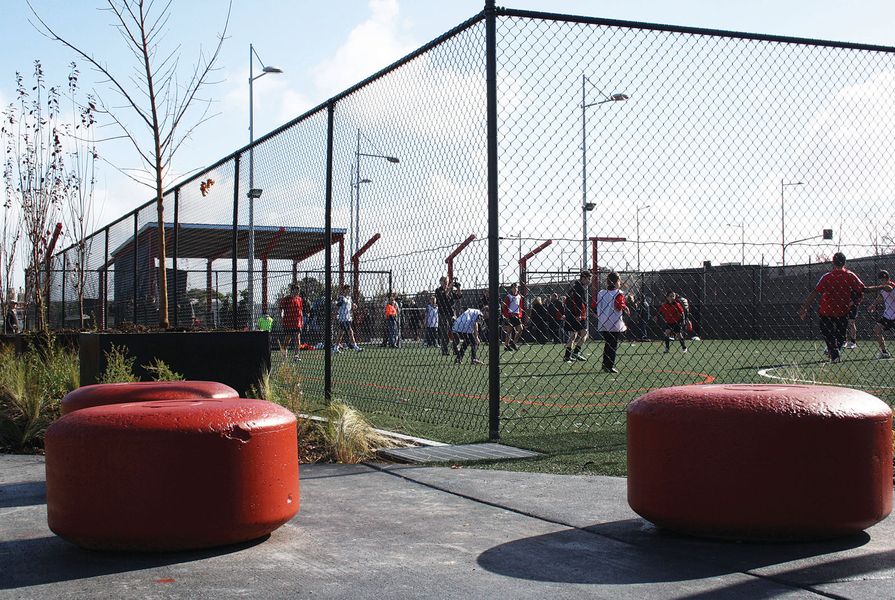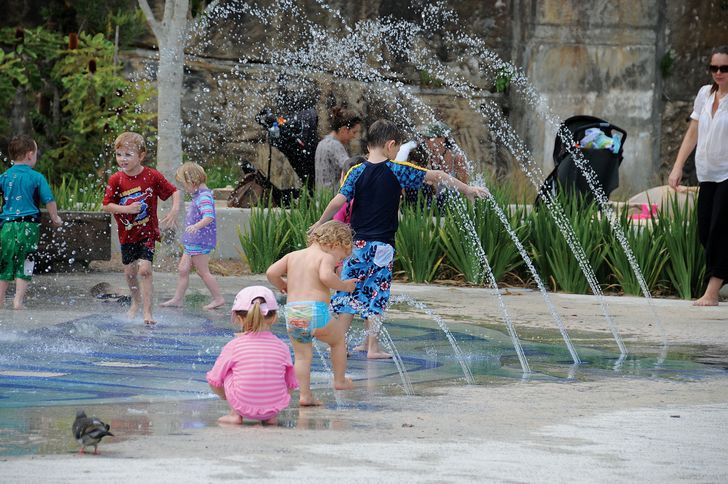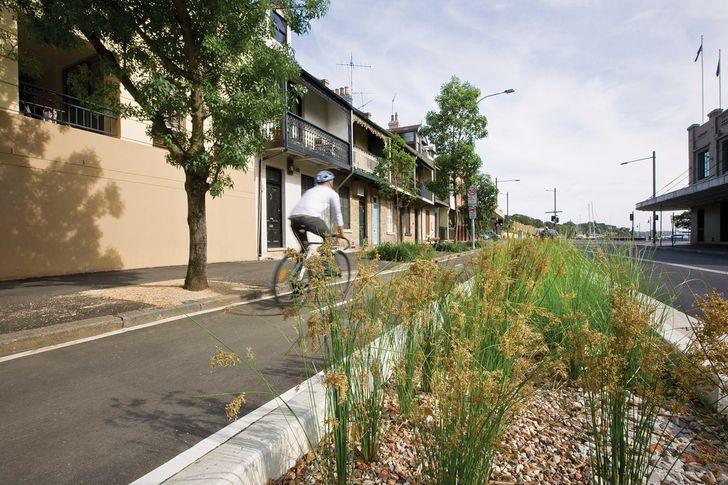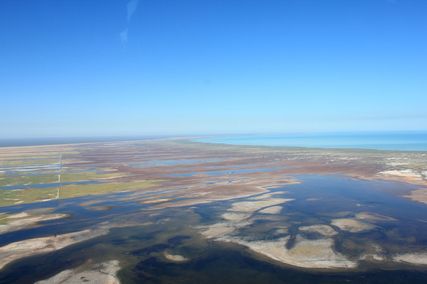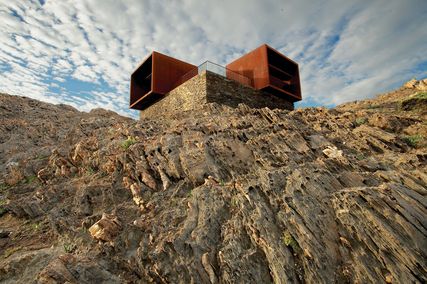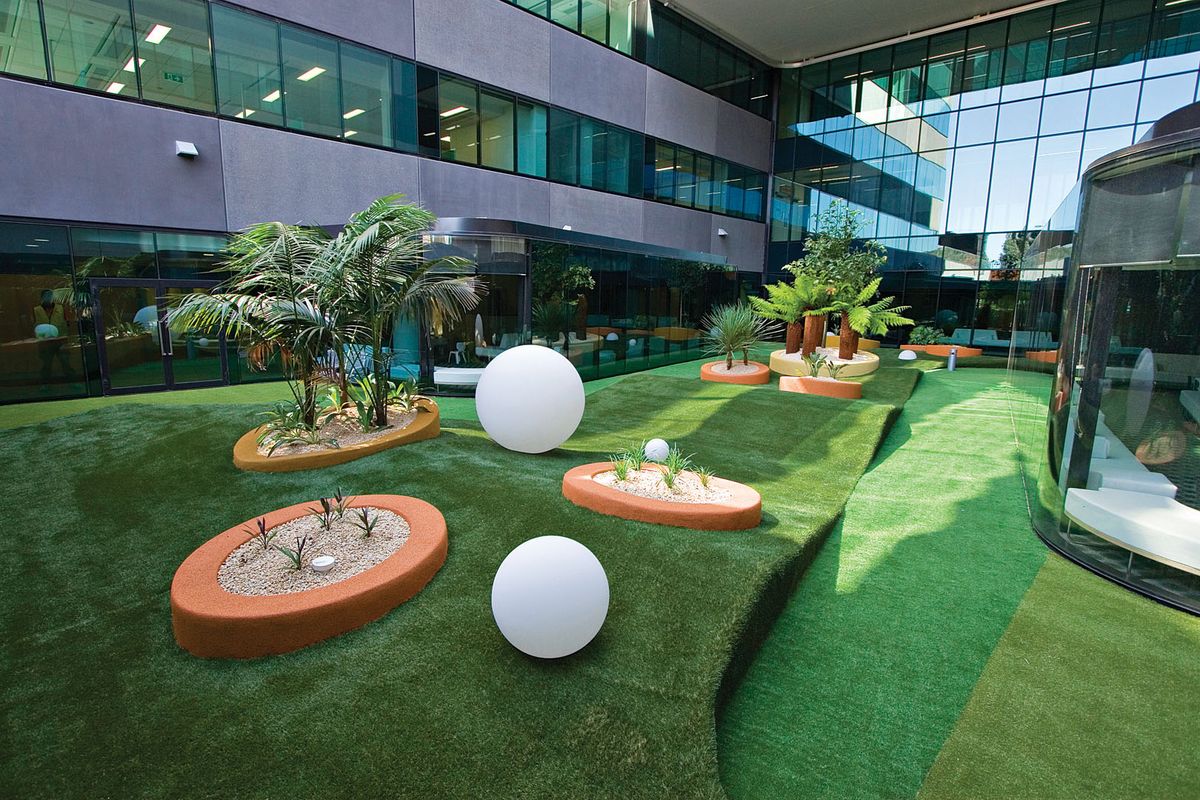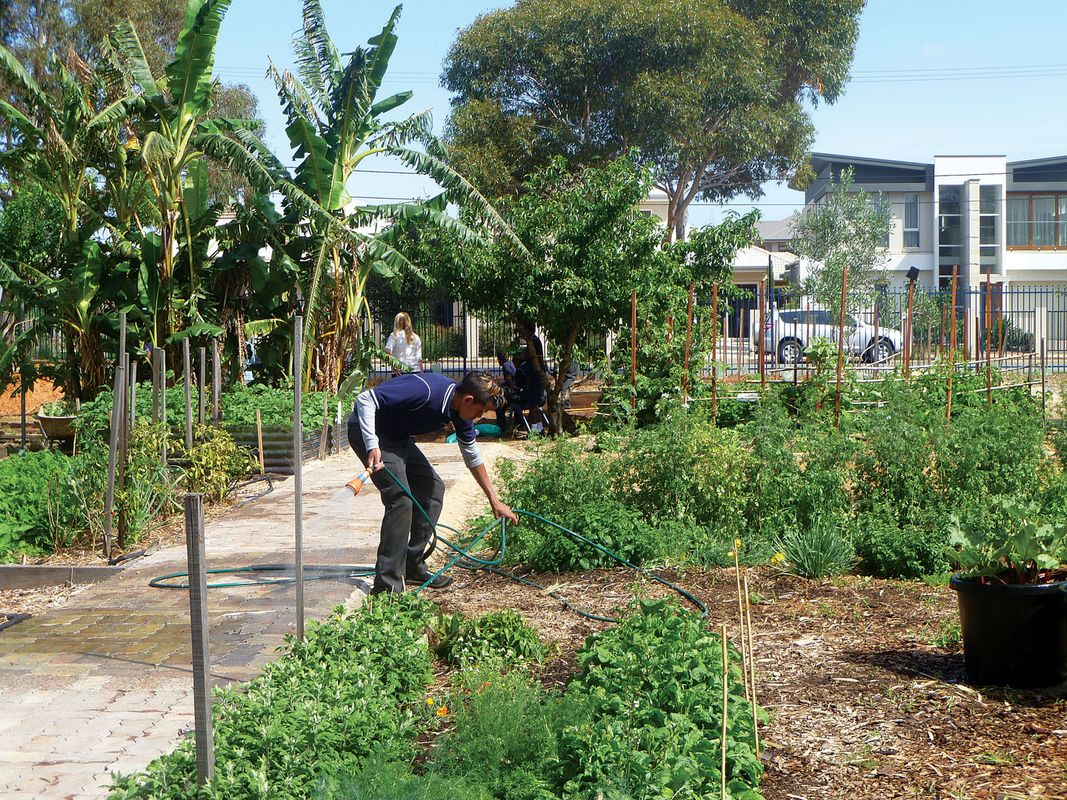Play
Outdoor areas that promote free, spontaneous play provide health benefits to children and adults alike. In these environments, children are able to refine important physical skills like running, jumping and climbing, as well as enhance their development of social skills. For adults, outdoor areas that encourage social interactions, provide exposure to natural settings and support physical activity have been shown to alleviate mental fatigue and reduce the risk of depression.
Play – Pirrama Park by Aspect Studios
Image: Adrian Boddy
Featured Play projects are about finding ways to transform ordinary sites into distinctive and fun destinations. Whether temporal or permanent, the projects draw on a variety of tools to attract users: elements of folly, revealing “hidden” spaces and facilitating community outreach. The critical difference between each of these projects isn’t about budgets or building materials, but about the types of users it caters to. Whether a person is seven or seventy years of age, the act of playing serves an important role in their mental and physical health. The design of outdoor spaces needs to reflect this through engagement with a broad range of users.
Heal
As early as the Middle Ages, convents and monasteries created gardens as places where people could meditate and recover from ill health. During the Victorian era, gardens were located within hospital grounds for the benefit of patients. Today, gardens within health care facilities continue to be identified as supportive environments for stressed patients, visitors and staff alike. Research at some prisons also recognizes these benefits, where gardens used for vocational training and therapy provide prisoners with a space in which to reflect and heal.
Heal – Bloomfield Hospital by Taylor Brammer Landscape Architects
Image: Gabriella Hegyes
Projects featured within Heal are about examining how institutions involved in health and rehabilitation are using the outdoors to enrich the process of restoring physical and emotional health. The projects provide varying degrees of connection and interaction with outdoor spaces, from passive viewing via hospital windows to actively using and maintaining garden areas. For some of the projects, the biggest benefits are achieved not through the outcome of gardens and artworks, but through the process of their creation.
Live
Where we reside has a huge impact on our health. Research shows if we are able to live within attractive communities that provide contact with nature, promote interaction with other people and provide areas in which to retreat for privacy, we are more likely to be happy. But if we live in areas that are overcrowded, noisy and dangerous, we tend to have fewer social networks and are more likely to experience feelings of distress, anxiety and depression.
Live – Halls Creek Town Walk by Udla
Image: Udla
Live projects look at open spaces that provide residents with a place for leisure and the opportunity to connect with their community. The projects contrast different types of neighbourhoods: urban, rural, regional, institutional and disadvantaged. The varying levels of community involvement within each of the projects reveal much about their use. Some projects are embraced with a strong sense of ownership and responsibility. Others are more defensive, where design moves are more about prevention than placemaking. While at varying levels of engagement, all the projects were created for a similar purpose: to accommodate people.
Work
Within the work environment, nature can act as a buffer for stress. In the 1990s, a survey of employees in sedentary jobs found that those who had views of natural environments felt less frustrated, were more patient, found their jobs more challenging and reported high life satisfaction and overall health. For the past twenty years, similar studies conducted across the world have pointed to the benefits that views or contact with nature can have on mental health in the workplace.
Work – Resource Centre Ipswich by Wilson Landscape Architects
Image: Christopher Frederick Jones
Projects within Work look at three examples of how nature can be accessed at the workplace: indoor landscapes, private courtyards and urban parks. These contrasting projects establish different levels of exposure to nature, either integrating it into, adjacent to, or within a short walk of the office. Each raises several issues: the benefits and drawbacks of relying on private space rather than public space, the connection these spaces have to surrounding land uses, and the types of physical, emotional and/or social benefits provided by each.
Travel
At the end of World War II, only one in four households owned a car. This had risen to 76 percent by 1966, and to 90 percent in 2006. Our cities have been redesigned to accommodate to this rapid uptake of the car, often at the expense of pedestrian- and cyclist-related infrastructure. This dependency on the car contributes towards our sedentary lifestyles and erodes opportunities for human contact and physical activity.
Travel – Bourke Street Cycleway by Pod Landscape Architecture
Image: Simon Wood
Projects featured in Travel are about reclaiming infrastructure for pedestrians, cyclists and people using public transport. Whether upgrading existing laneways with art, retrofitting streets with cycleways or enlivening transport nodes into social hubs, these projects seek to make active travel safe, accessible and fun. It’s not fair to tell people that active travel is healthier if the opportunities don’t exist in the first place.
Learn
Urbanization continues to have an impact on our towns and cities, and it often comes at the expense of developing our natural areas and open spaces. As these spaces diminish, so does their accessibility. Schools and learning centres are growing increasingly important as places where children and students can be exposed to nature. Studies have shown how the greening of school grounds enhances social inclusion within school communities and improves children’s activity levels, interpersonal skills and classroom behaviours.
Learn – Isabel Henderson Kindergarten by Jeavons Landscape Architects
Image: Jeavons Landscape Architects
The projects within Learn demonstrate a variety of ways in which school communities are using the outdoors to boost students’ confidence levels and expand their knowledge and experience with nature. The case studies accommodate students from a broad range of ages and abilities, such as pre-schoolers using dirt for creative play, high-schoolers learning how to grow food and teens with mental and physical handicaps using the garden as a way to learn skills that can prepare them for life after graduation. Each example focuses on exposure to gardens and nature as a way to inspire curiosity, teach everyday tasks and create a lasting connection with the outdoors.
For further information and resources, visit aila.org.au/bloom.
Source
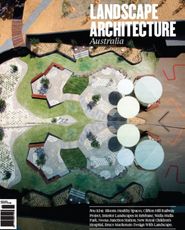
Report
Published online: 1 May 2012
Words:
Gweneth Newman Leigh
Images:
Adrian Boddy,
Andrew Lloyd,
Aspect Studios,
Blackwell & Associates,
Christine Hensel,
Christine Tomas,
Christopher Frederick Jones,
City of Melbourne,
City of Perth,
Designwell,
Gabriella Hegyes,
Guymer Bailey Architects,
Gweneth Newman Leigh,
Jeavons Landscape Architects,
Jessica Paulson Photography,
John Gollings,
Mark Frisby,
Richard Plumridge,
Simon Wood,
Udla,
Vaughn Bowden,
Vladimir Sitta
Issue
Landscape Architecture Australia, May 2012

